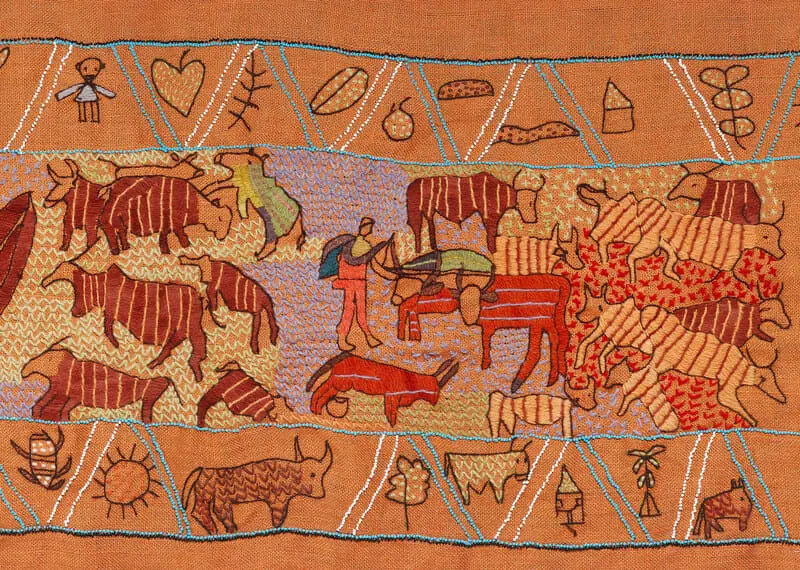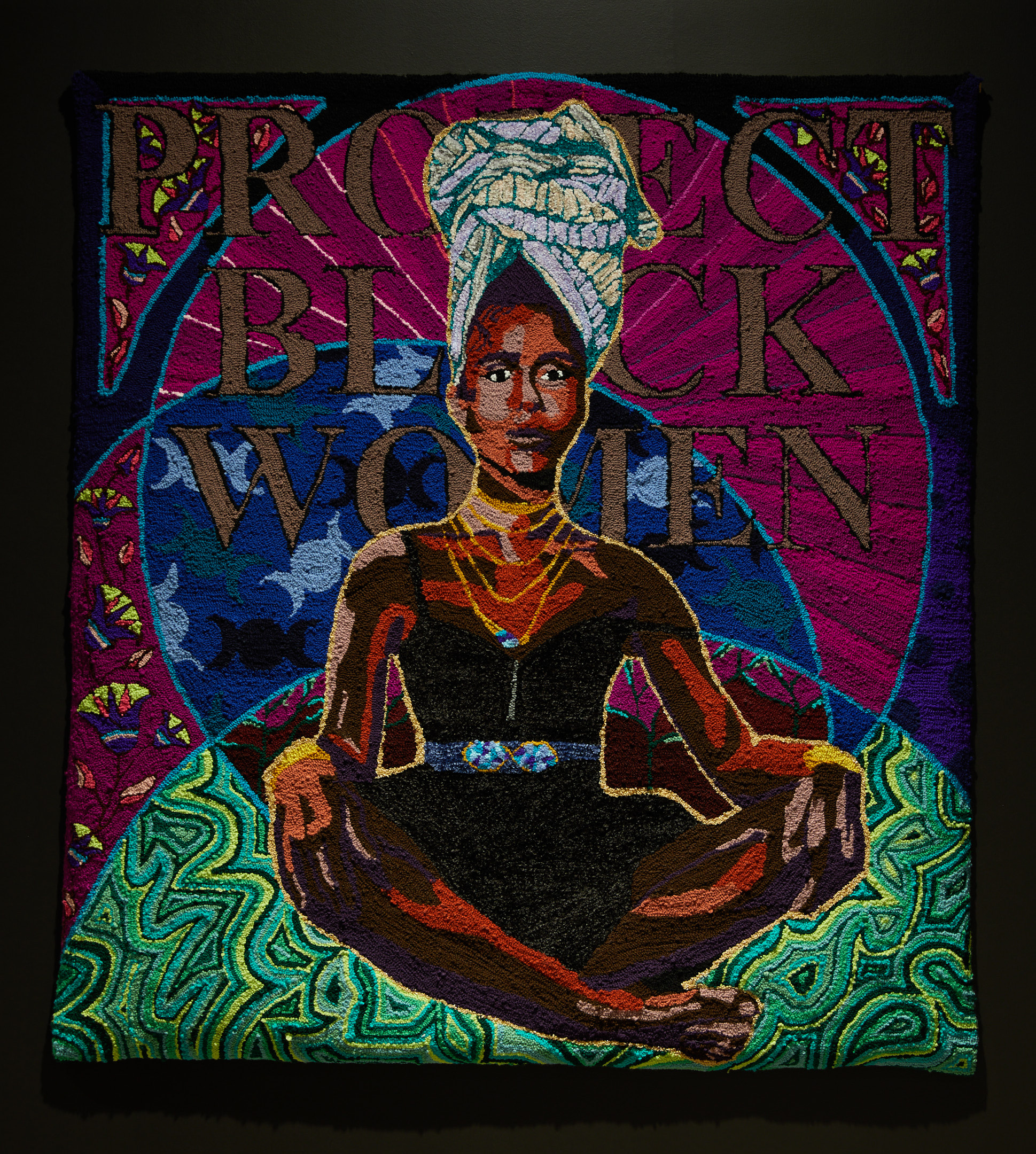One of my favourite things about embroidery and needlework, in general, is how it can inspire the least of us to do great, albeit humble, things.
The Bayeux Tapestry has been admired, copied, re-invented, and used as inspiration by people across the world. The Keiskamma Tapestry is one of these. Created by rural Xhosa women from Hamburg, a small settlement in the remote south-eastern region of South Africa, it is currently on permanent display in the Parliament building in Cape Town.
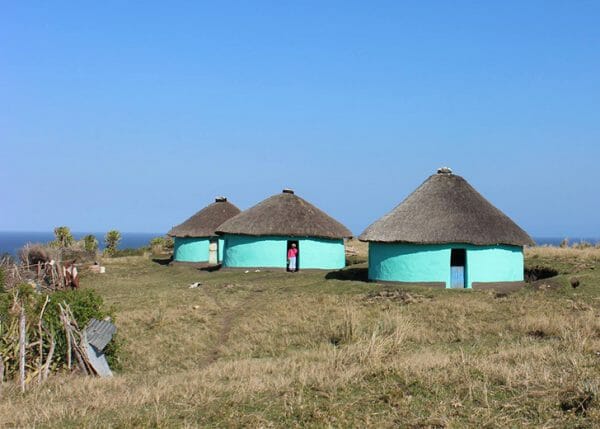
Dr Carol Hofmeyr
Medical doctor and artist, Carol moved to Hamburg with her husband in the late 1990’s to retire in this quiet rural setting. She was so moved by the obvious poverty and need around her, that it prompted her to start a community art project providing both an income and a form of therapy to the people in need. The community was suffering from the ravages of untreated HIV and AIDS, poverty, a lack of employment opportunities and affordable medical treatment.
The Keiskamma Trust was founded by Carol in 2000. She came up with the idea to create a local version of the Bayeux Tapestry after seeing the original one in Europe. The story of the events leading up to the Battle of Hastings had many touch points with the local history of the Xhosa people and the settlers of the Cape Colony. It was the ideal community project to help the people of Hamburg heal.
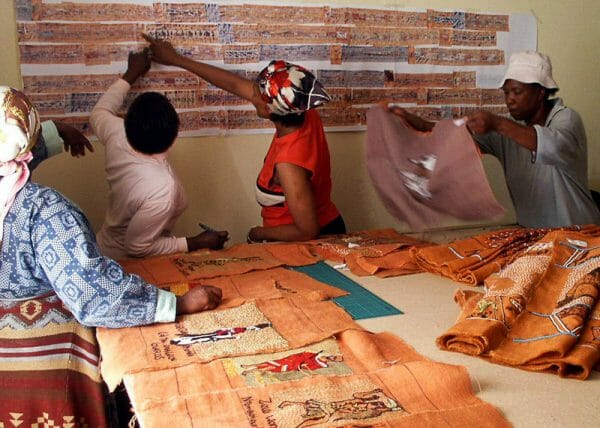
Carol lead and educated the local women while researching their history, tradition, and stitching methods. They combined the Bayeaux embroidery stem and laid stitching with their own repertoire of natural stitching and beading techniques. They used the same philosophy when it came to deciding on the colour scheme and the use of traditional symbols and iconography.
The Keiskamma Tapestry
At 126 metres long, it depicts the history of the area from the arrival of the 1820 Settlers to the release of Nelson Mandela in 1994. By using their traditional knowledge and both written and oral history, the women wove a story starting with the land originally filled with wildlife and devoid of human influence.
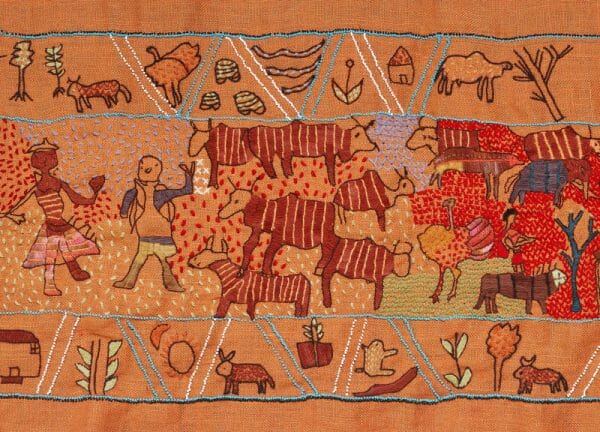
Then followed the original San and Khoi nomadic inhabitants who made little impact on the land but was in time pressured, and later displaced by the pastoral Xhosa tribes who came from the north and inhabited the land with cattle and crops. These tribes later came in to contact, and then into conflict, with the European colonial settlers moving north from the Cape of Good Hope. What is now known as the Eastern Cape became a battle ground.
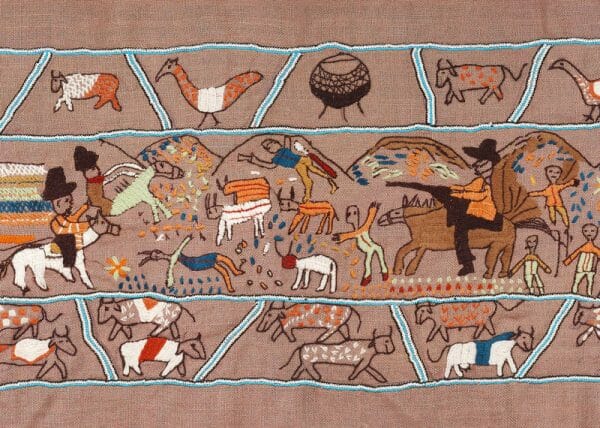
The team of more than 100 women who first designed and then stitched this mammoth project, had to make a range of decisions informed by their culture, their environment, and their skills. The original Bayeux Tapestry dictated the layout of the scenes, borders, and the style of drawings. However, other elements like the type of fabric, the different stitches and the colour spectrum were locally influenced.
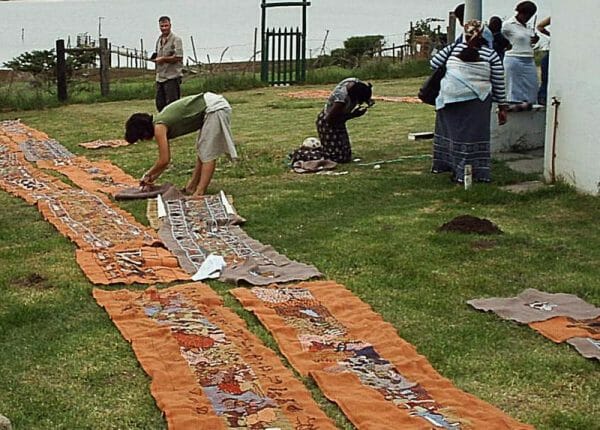
Fabric and symbols
The base fabric is Hessian instead of linen. He local Hessian was chosen because of the red ochre colour which is typical of the area has traditional significance. Hessian was also previously used as sacks for maize – the staple food of the region. It has been suggested that where linen in the original Tapestry denoted status, hessian in the case, denoted the opposite. However, the reference to food bags signifies the original purpose of the Keiskamma Trust – to raise an income providing food and sustenance for their families.
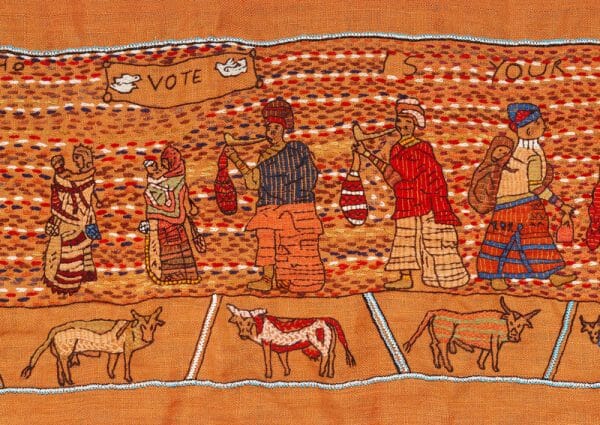
The Nguni Cow, endemic to southern Africa is a symbol of wealth, strength and cohesion. Cattle was considered one of the first forms of capital and created personal wealth. These animals take pride of place throughout the Tapestry.
The Eastern Cape became a frontier – the southward moving Xhosa tribes and the northward moving colonial settlers confronted each other here, leading to many skirmishes and battles, ultimately leading to the apartheid system of separate development.
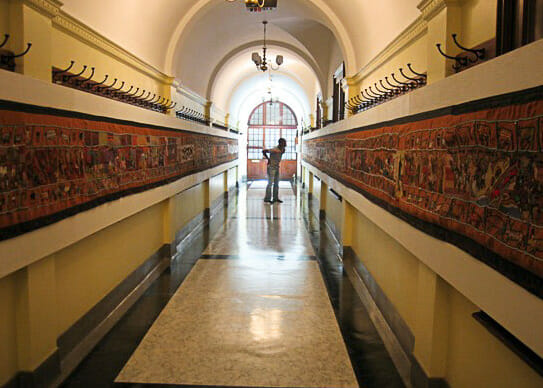
But like the history of the country, the story of the Tapestry culminates in a theme of restoration. The serenity supported by the landscape prevails. The women, against all odds, are standing tall, embracing their history, tackling the problems of ill health and poverty, and through their art, they embody pride and restoration.
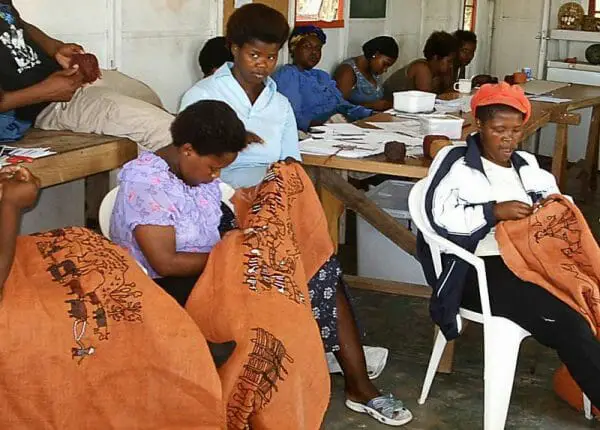
Today, the women of the Keiskamma Trust continue to create works of art. Some big, some small. They create their own stories and they accept commissions. What started out as one woman providing art therapy, has grown into a whole community of women who are empowered to take care of the income, health and education of their families.
A battle fought and won. Just like the one in Hastings many centuries ago.

